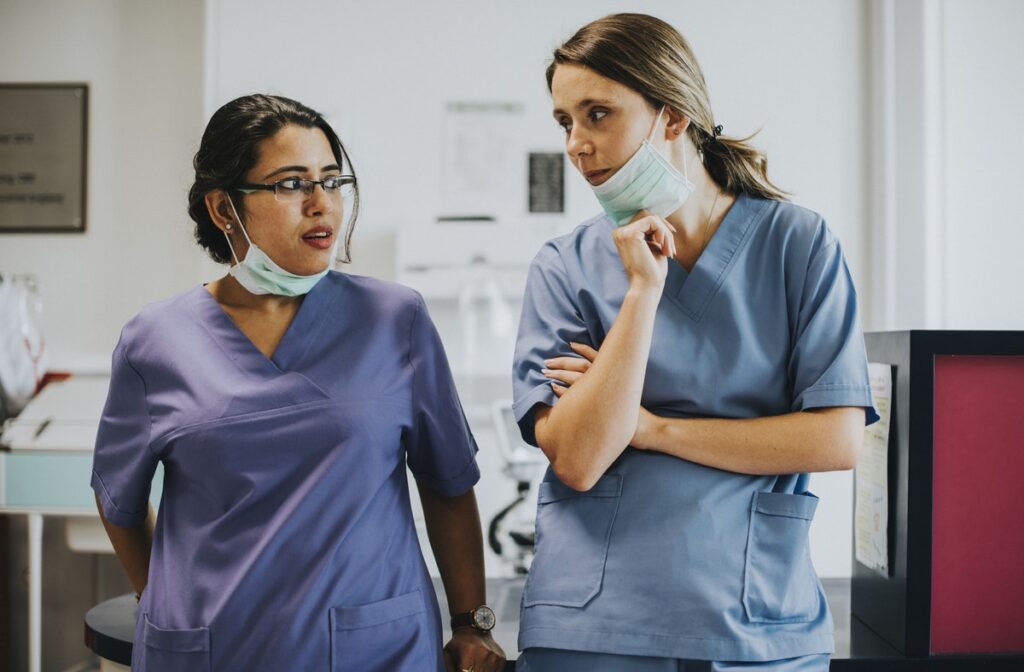
Not all heroes wear capes. In fact, a significant proportion of the UK’s most cherished heroes wear scrubs.
But have you ever wondered about the reason for these practical, comfortable, instantly recognisable uniforms? Why are they usually blue? Just how many pens can you fit in that front pocket? Are halos included in the design, or do they simply come as standard for such a selfless role?
Since the beginning of history, there have been caring and compassionate people in our societies providing care and medicine to the vulnerable. Of course, the role of a nurse has become more varied and complex, so it makes sense that the nursing uniform has also been through many stages in its evolution. Whether you are already a nurse, you’re just entering the nursing profession, or you’re simply interested in the history of their clothing, here are 7 interesting facts about nurses uniforms.
FLORENCE NIGHTINGALE IS THE REASON WHY NURSES HAVE A UNIFORM
Florence Nightingale is arguably the most famous nurse of all time, and is credited with being the founder of modern nursing. We’re forever grateful for her work.
What you may not know, however, is that she was the first person to recommend that nurses wear different uniforms to doctors so that it was easier to tell them apart. Click here for more information on Florence Nightingale.
19TH CENTURY NURSES USED UNIQUE WAYS OF DISTINGUISHING THEMSELVES
Nurses back in the 19th century wanted to appear respectable, important and distinct from other workings in both domestic and hospital settings, so they wore floor-length uniforms. Hierarchy was distinguished in other ways, too; back in the 1860s, a nurse with a cap and a black ribbon was more senior than nurses with lighter colours. Incidentally, if you’re interested in learning more about modern-day nursing attire, check out this article on Poppy Scrubs for tips on wearing scrubs fashionably.
WORLD WAR I BROUGHT SHORT SKIRTS
The nursing uniform was adapted after World War I to make skirts shorter (to above the ankles) so that nurses could move around more easily, and even run when they needed to (which would have been very handy on the battlefield).
SURGEONS WORE BUTCHER’S APRONS
Prior to 1940, a surgeon would have worn their own casual clothes with a butcher’s apron over the top. A little macabre, imagery wise, but efficient nonetheless.
Actually, it wasn’t so efficient; around 1940 the butcher’s aprons were banished due to concerns about hygiene and the fact that surgeons appeared to look like everyone else. In modern times, it seems like the distinction between surgeon and nurse may be set to blur once again; it was reported last year that retrained nurses will be able to perform surgery in a bid to reduce UK waiting lists.
NURSES USED TO WEAR HATS
Nurses used to wear hats (also known as caps) in their standard uniform, but this was gradually stopped as they were believed to cultivate bacteria. Made of hard fabric, it was said that these caps were difficult to wash thoroughly and comprehensively. Nowadays, caps are mainly reserved for wear by surgeons in theatre.
NUNS, BACKPACKERS AND NURSES HAVE SCRUBS IN COMMON
Durable and bacteria-resistant scrubs were introduced in the 1960s and 70s and are now the most popular type of nurse outfit. That said, they were originally designed for a different purpose; they were initially developed out of nun’s practices as they often cared for sick and injured people. In modern times, scrubs are so comfortable that backpackers often wear them on their travels.
THERE IS A REASON WHY SURGICAL STAFF WEAR GREEN OR BLUE
Surgeons and surgical nurses typically wear blue or green uniforms, but did you know that there is a practical reason for this? Wearing white could dazzle surgeons and nurses when they move their gaze from their patient to a colleague, just as we are momentarily blinded when we walk out to find the ground covered in snow. Blue and green are at the opposite end of the spectrum to the red of patients’ blood, muscles and organs, therefore helping to focus the vision and make tiny nuances in the body more noticeable.




